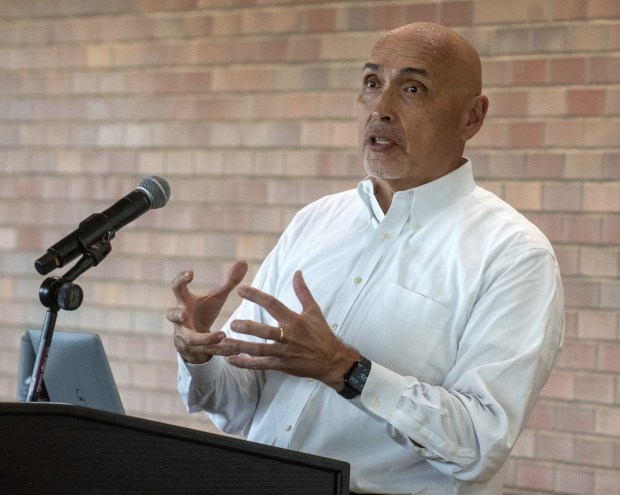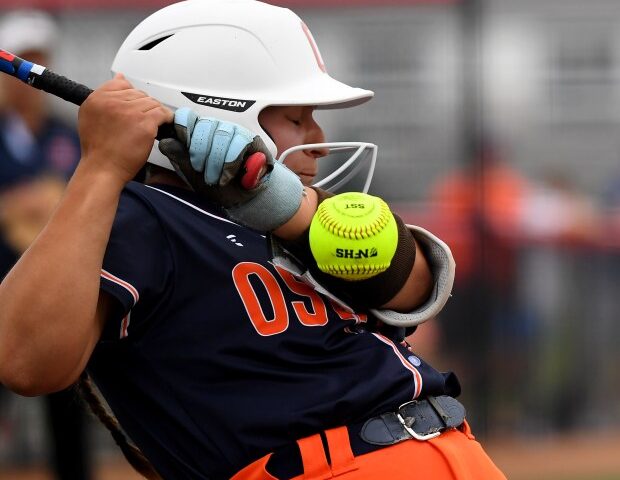The auction of the three most valuable paintings in the collection of the Brauer Museum of Art at Valparaiso University appears to be edging forward after Indiana Attorney General Todd Rokita’s office said in a Friday court filing that it would not object to the sale, with the expected proceeds from millions of dollars in artwork going to renovate freshmen dorms and establish a gallery for them.
The university filed a petition in Porter Superior Court on May 28 seeking to modify a trust established by the late Percy H. Sloan, which provided the paintings or the funding for them, to allow for the sale.
The paintings are “Mountain Landscape” by Frederic E. Church; “Rust Red Hills” by Georgia O’Keeffe; and “The Silver Veil and Golden Gate” by Frederick Childe Hassam.
According to appraisals received by the university, the fair market value of the O’Keeffe is estimated at $10.5 million to $15 million; the Hassam, between $1 million and $3.5 million; and the Church at $1 million to $3 million.
“The Attorney General has received and reviewed many documents and other information from the University and those in the Valparaiso community opposed to the sale in the months leading up to this Petition and has conducted additional research on the gift and the constraints placed upon it pursuant to the Gift Agreement, Will, and Trust,” the office’s filing states.
“The Attorney General does not object to the University’s requested relief as outlined in its Petition.”
Valparaiso University President José Padilla first announced the possible sale to the campus in February 2023, setting off a controversy on campus and drawing criticism from students, faculty and the greater university community, as well as opening the museum to censure or sanctions from other museums for lending or borrowing artwork.
The proposal also drew the ire of Richard Brauer, the museum’s namesake and founder, who has threatened to remove his name from the building if the sale moves forward.
The paintings were moved to a secure, off-campus location on Sept. 12.
In an email to the campus community last week, Padilla said the university had filed the petition and pledged to update the campus once the court makes a ruling.
Valparaiso University President Jose Padilla speaks during a community town hall held in Valparaiso, Indiana on Sept. 20, 2022. (Andy Lavalley/for Post-Tribune)
“We will continue to take steps that we believe are in the best interest of all our students, in support of our mission and the University’s future — our highest priorities,” Padilla said in the email.
The Attorney General’s Office got the weight of the decision on the paintings’ fate after Brauer and the late Philipp Brockington, a retired VU law professor and museum benefactor, filed a lawsuit to halt the sale of the artwork last spring.
Porter Superior Court Judge Jeffrey Thode ruled in October that Brauer and Brockington did not have standing in the case, leaving the matter up to Rokita’s office. Brockington died in November.
Brauer and John Ruff, a senior English professor at Valparaiso University who has been long involved with the museum and also is a close friend of Brauer’s, filed a notice to intervene in the university’s petition to auction the artwork on Thursday.
The filing included an evaluation from Yale University-educated art scholar Wendy Greenhouse and the request that two or more art experts be heard on the petition before the university’s request is granted.
The university has demanded the petition to intervene be withdrawn, said Portage attorney Patrick McEuen, who has worked with Brauer, Brockington and now Ruff to stop the sale
The university claims that since Brauer and Brockington did not have standing in the lawsuit filed last year to stop the sale, an attempt to intervene now is therefore frivolous, McEuen said.
“We’re discussing any and all available options to contest this sale now that the university has demanded we withdraw the petition to intervene, including whether we need to withdraw the petition,” McEuen said.
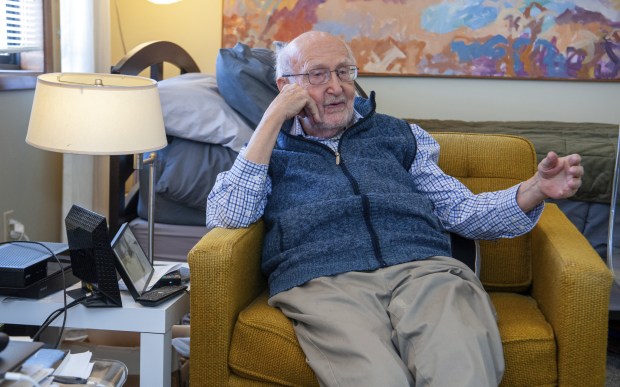
Dick Brauer, founder of the Brauer Museum of Art at Valparaiso University, pauses while speaking at Pines Village Retirement Communities in Valparaiso, Indiana on Monday, February 6, 2023. Brauer has said if the university plans to sell millions of dollars in artwork he wants his name removed from the museum. (Andy Lavalley for the Post-Tribune)
Rokita’s office was tasked with determining whether the auction of the artwork to raise funds for dorm renovations for first-year students would be a violation of the tenets of the trust from Sloan.
“I don’t think this proposed sale is consistent with this trust, period,” said Boston attorney Nicholas O’Donnell, an expert on art law and author on the subject.
He added that as far as the university’s claim that two of the three paintings weren’t consistent with the intent of the trust to begin with, “I think it’s about 60 years too late” to make that argument. “That seems a bit much to me.”
As to Valparaiso University’s plans to use the proceeds from the auction to renovate the dorms and to construct the “Sloan Gallery of American Paintings” to display other, less valuable works from Sloan’s collection on a rotating basis, “I think that is an acknowledgment that a restriction (on the trust) exists, which also means they’re bound by it.”
“The university is the recipient of this charitable gift, and the university is bound by it,” O’Donnell said.
When Brandeis University lost a huge portion of its endowment because the scheming of financier Bernie Madoff brought down several of its large benefactors, the university argued that it had to sell the artwork in its expansive collection to survive, O’Donnell said, though Brandeis officials later backed down.
While Valparaiso University officials note declining enrollment — which they hope renovated housing can help rectify — and a $9 million deficit for the 2023/34 fiscal year, as well as the cost of storing the paintings in a secure location off campus and the expense to protect them at the Brauer Museum, the two campuses differ, O’Donnell said.
“Brandeis could credibly say, we’re facing an existential crisis because of the 2008 financial crisis” and Madoff’s actions, O’Donnell said.
He does not see the same thing at Valparaiso University, summarizing their argument: “We’re operating at a loss. We have important priorities.”
That’s not an argument for the cy pres doctrine, he said.
Under Indiana Code, and according to the petition filed by Valparaiso University, if property is given to a charitable trust “and it is or becomes impossible, impracticable, wasteful, or illegal to carry out the particular purpose,” the court “may direct the application of the property to some charitable purpose which falls within the general charitable intention of the settlor.”
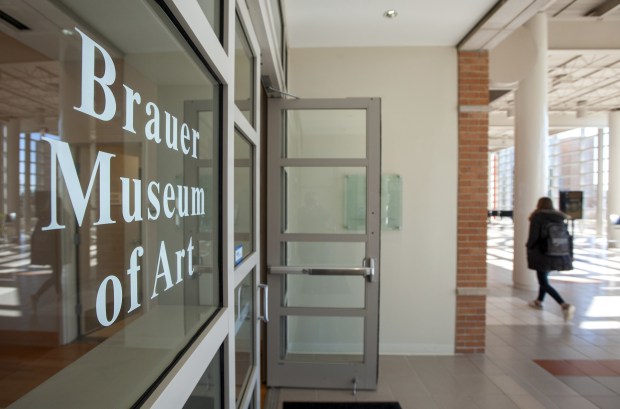
Entrance of the Brauer Museum of Art on the Valparaiso University campus in Valparaiso, Indiana on Friday, February 10, 2023. (Andy Lavalley for the Post-Tribune)
In simpler terms, Valparaiso University argues that keeping the paintings is too expensive and impractical to follow the terms of the trust and is therefore asking the court to sell the paintings and use the proceeds for the dorm renovations and a gallery of other paintings from the Sloan collection.
“The O’Keeffe, Hassam, and Church paintings have all substantially appreciated in value such that Valparaiso University can no longer, as a practical matter, securely display them in accordance with the Gift Agreement without incurring substantial capital improvement costs to its current art museum,” the petition states.
Renovating the museum to securely store the paintings would cost $50,000 to $100,000, with museum security guards and front desk staff costing $150,000 in salaries annually, according to the petition.
Additionally, the university claims in the petition that its enrollment has dropped by “nearly one-third over the past five years from 4,500 to less than 2,800 students.”
That and the operating deficit make it “impractical and wasteful for Valparaiso University to spend funds on the capital improvements needed to securely display the O’Keeffe, Hassam, and Church paintings. It is likewise wasteful for those three paintings to remain in storage.”
Part of the university’s argument is that keeping the paintings in storage does not serve the trust’s intention of educational purposes but creating a gallery within the renovated dorms would do that.
The university also argues that the new dorms will bring in more students, helping erase its budget deficit and also providing a larger audience to view the paintings in the collection.
The university, according to its petition, proposes renovating its freshman dormitories, Brandt and Wehrenberg halls, as part of its strategic plan. “The estimated cost of such renovations and capital improvements is between $12-20 million depending on final scope of work and material costs.”
The university’s argument for selling the paintings also hinges on its claim that two of the paintings, those by O’Keeffe and Hassam, do not fit in with the “conservative” art movement that was at the forefront of Sloan’s collection, and therefore should be deaccessioned.
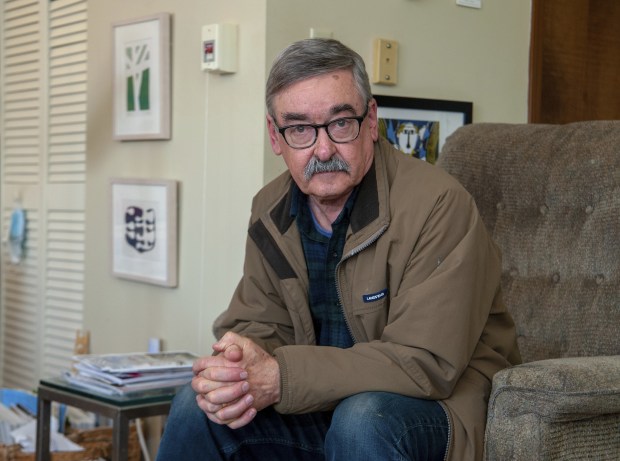
Senior research professor John Ruff pauses while speaking about the Brauer Museum of Art at Valparaiso University in Valparaiso, Indiana on Monday, February 6, 2023. Ruff has long been involved with the museum and is concerned about recent moves to sell portions of its collection. (Andy Lavalley for the Post-Tribune)
Brauer and Ruff disagree, as does Greenhouse, who is familiar with the museum’s collection, Brauer’s work and the paintings in question.
The university’s petition and the two art experts who provided supporting opinions claim that the O’Keeffe painting is abstract art and the one by Hassam is Impressionist, and neither, therefore, fits the definition of conservative art.
The petition also notes that Richard Brauer knew O’Keeffe’s work was not a conservative painting and purchased it anyway.
“I think the petition grossly misrepresents the narrative and maligns Richard Brauer, the committee he served with and the trustee, Louis Miller,” said Ruff, adding all of Brauer’s purchases for the museum were approved by Miller. “The narrative they tell about the acquisition is false.”
Miller, who was Sloan’s trustee, was involved in every purchase and guided the museum’s committee.
“He expressed gratitude for how they did their work,” Ruff said. “If the trustee were alive today, he would have no tolerance for this idea of selling artwork and using the proceeds for a dorm with gallery space.”
Ruff also scoffed at the idea that Brauer was working outside the limits of the trust.
“His guidance was instrumental but he wasn’t working alone,” he said.
Sloan talks a lot about the beauty of artwork in his trust and the value of art for educational purposes, said Greenhouse, of Oak Park, Illinois, who is familiar with the Brauer Museum’s collection.
The paintings by O’Keeffe and Hassam are beautiful, she said, also pointing out that the definition of “conservative” art has shifted over time, and therefore shouldn’t be a factor in whether the paintings remain in the collection.
“How come nobody realized they violated the trust until they needed the money?” she said, adding the Church painting, which is not under question for whether it’s a conservative painting, has been deemed too expensive to store or safely display.
From the university’s standpoint, the only way to honor the trust is to sell the artwork, renovate the dorms and fulfill the educational mission of the trust with a gallery in the dorms, Greenhouse said. Even Miller, the executor of the trust, understood the value of the paintings.
“Their argument is so convoluted and misguided,” she said of the university’s petition.
In the long run, Greenhouse said, selling the paintings will undermine the university’s educational mission.
“This is such an example of cutting your nose off to spite your face,” she said, “and unfortunately, it’s going on across the country.”
alavalley@chicagotribune.com


